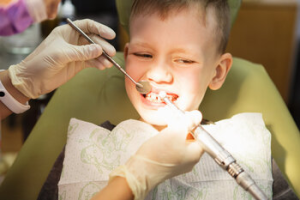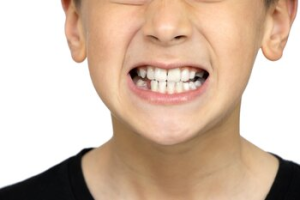Understanding Bruxism:
Although the term “Bruxism” might not ring a bell for everyone, its manifestations are widely recognised. Essentially, it denotes the involuntary act of grinding or clenching the teeth. While this habit is present across all age brackets, its appearance in the young evokes specific attention due to their evolving dental anatomy. To fully grasp this behavior, a deeper exploration is warranted.
Defining Bruxism:
Bruxism, in its essence, refers to the subconscious act of teeth grinding or clenching. Imagine a behavior so subtle, one might not even be cognizant of it. Intriguingly, it’s not solely a nocturnal phenomenon; several individuals exhibit this during waking hours as well.
Definition and Description of Bruxism:
Bruxism, a term not universally known but quite commonly observed, refers to grinding or clenching the teeth. While it can be observed in individuals of all ages, its occurrence in children often leads to particular concern given their developing dental structures. We can further categorise and understand this phenomenon by delving deeper into this topic.
What is Bruxism?
Bruxism is just a fancy term we use to talk about when someone unknowingly grinds or clenches their teeth. It’s like when you do something without even realising it. And guess what? It doesn’t only happen during sleep; some people do it during the day too!
Types of Bruxism:
Nocturnal Bruxism: This is the most common form associated with children. As the name suggests, nocturnal bruxism refers to the child’s teeth grinding during sleep. It’s often noticed by caregivers rather than the children, who might be unaware of their nighttime habits. If not addressed, this type can lead to disrupted sleep and potential dental harm.
Daytime Bruxism: Unlike its nocturnal counterpart, daytime bruxism happens when the child is awake. It can be a conscious or unconscious act and is often linked to moments of deep concentration, stress, or anxiety. This form of bruxism can be easier to spot and correct since the child is conscious.
 Bruxism vs. Normal Dental Development:
Bruxism vs. Normal Dental Development:
If teeth grinding occurs, it can be a part of regular dental development, especially when kids are shedding their primary baby teeth and making way for permanent ones. However, persistent, excessive grinding can cause concern and warrant further investigation.
In understanding bruxism, we pave the way for identifying its causes and formulating appropriate interventions. Recognising the differences between the types of bruxism and distinguishing it from normal dental developmental behaviours is the first step in this journey.
Possible Causes of Teeth Grinding in Kids:
Teeth grinding, or bruxism, in children can be unsettling for parents. While the exact cause can be multifaceted and sometimes elusive, understanding the potential triggers can guide parents and caregivers in seeking the appropriate solutions. Let’s delve into some of the predominant causes behind this phenomenon in children.
Physical Causes:
Dental Issues: One of the primary physical reasons for bruxism in children is the misaligned teeth that can cause irregular bites. As their teeth grow and change, children grind their teeth to alleviate the discomfort caused by overlapping or crowded teeth.
Pain Relief: Teeth grinding can be a child’s instinctual response to pain. For toddlers, this might be related to the discomfort of teething. It could be an earache or another form of oral pain for older children. Grinding provides a counter-pressure that offers temporary relief.
Psychological Causes:
Stress: Just like adults, children aren’t immune to the pressures of life. Stressors such as starting a new school, tests, or even familial issues like sibling birth can induce anxiety. Bruxism can be a manifestation of this stress, serving as a coping mechanism.
Emotional Disorders: In some children, emotional disorders can lead to bruxism. This includes attention-deficit/hyperactivity disorder (ADHD), anxiety, or oppositional defiant disorder (ODD).
Other Factors:
Medications and Supplements: In some cases, the side effects of certain medications or supplements can lead to bruxism. While rare, it’s always beneficial for parents to be aware of risky side effects and consult with their paediatrician.
Medical Conditions: Bruxism can also be associated with specific medical conditions, including Parkinson’s disease, GERD (Gastroesophageal reflux disease), night terrors, sleep-related disorders like sleep apnea, or certain parasomnias.
Family History: Some evidence suggests that bruxism might have a hereditary component. Children with parents or siblings who grind their teeth are at a potentially higher risk of developing the habit themselves.
Potential Effects of Prolonged Teeth Grinding:
If a child grinds teeth occasionally, it might seem harmless, especially when observed in a child who appears otherwise healthy. However, bruxism can lead to many complications if it continues over an extended period. Prolonged teeth grinding can impact a child physically and emotionally, emphasising the importance of timely identification and intervention. Here are some potential effects of unchecked, long-term bruxism.
Dental Complications:
Enamel Erosion: The persistent grinding wears down the tooth enamel, the hard protective outer layer of teeth. This erosion can lead to increased sensitivity and vulnerability to dental decay.
Tooth Fractures or Chips: Prolonged grinding puts undue pressure on the teeth, leading to cracks, chips, or even fractures in severe cases.
Tooth Flattening: Over time, the biting surfaces of the teeth can become flat and dull, affecting the child’s bite and overall dental appearance.
Jaw Issues:
Temporomandibular Joint Disorders (TMD): Continuous grinding can strain the temporomandibular joint, which connects the jaw to the skull. This strain can lead to TMD, resulting in pain, difficulty chewing, and even locking of the jaw.
Muscle Strain: The repetitive motion and pressure can lead to muscle soreness and strain around the jaw, causing discomfort and pain.
Sleep Disruptions:
Sleep Disturbances: Sleep bruxism can disrupt a child’s sleep cycle, leading to insufficient rest, fatigue, obstructive sleep apnoea, and irritability during the day.
Co-occurring Sleep Disorders: In some children, bruxism may be associated with other sleep disorders such as sleep apnea or night terrors.
Emotional and Psychological Impact:
Increased Stress: The physical discomfort from grinding can elevate stress levels in children, potentially perpetuating the grinding habit.
Self-consciousness: Older children might become self-aware of their grinding habit, leading to embarrassment or self-consciousness.
Diagnosis:
Diagnosing bruxism in children involves a combination of observation, clinical evaluation, and, in some cases, specialised studies. The key to effective treatment lies in accurate and early diagnosis. Here’s a look at the steps involved:
1. Parental/Caregiver Observations:
Parents often play a crucial role in identifying bruxism. The grinding noises during sleep or visible signs of teeth clenching during the day can be the initial indicators. Also, reports of morning jaw pain or complaints of headaches might hint at nighttime tooth grinding.
2. Dental Examination:
A paediatric dentist can identify signs of bruxism during regular checkups. Telltale signs include worn-down teeth, particularly the enamel, and evidence of tooth fractures or chips. The dentist may ask about the child’s sleep habits, daily routines, and any potential stressors contributing to grinding.
3. Sleep Studies:
A sleep study or polysomnography might be recommended for severe cases with a suspicion of associated sleep disorders like sleep apnea. This study monitors various body functions during sleep, including jaw muscle activity, which can confirm nocturnal bruxism.
Treatment Options and Preventative Measures:
When addressing bruxism in children, treatment and preventive measures can be employed. Early intervention is paramount to reduce potential complications and improve the child’s overall quality of life. Here’s a comprehensive look at the available strategies:
Dental Interventions:
Dental Guards or Splints: These are custom-made, soft plastic or acrylic devices that fit over the upper and lower teeth. They help distribute the pressure from grinding and prevent teeth from rubbing against each other, thus reducing wear and tear.
Orthodontic Correction: If misalignment of teeth or an abnormal bite is identified as the cause, orthodontic treatments, like braces, might be recommended to rectify the issue.
Behavioural and Therapeutic Approaches:
Stress-Reduction Techniques: Introducing children to relaxation methods such as deep breathing exercises, progressive muscle relaxation, or even simple meditation can be beneficial. These techniques can alleviate anxiety, a common trigger for bruxism.
Behavioural Therapy: A child psychologist can help identify underlying stressors and provide coping mechanisms. They can also guide children to become aware of their clenching habits and consciously relax their jaw muscles during the day.
Lifestyle Adjustments:
Consistent Sleep Schedule: Regular sleep routines can reduce episodes of bruxism. A calm bedtime routine, including reading or listening to soft music, can also make a difference.
Dietary Considerations: Reducing or eliminating caffeine and sugary foods, especially before bedtime, can help. These stimulants increase the likelihood of grinding.
Avoid Chewing Non-Food Items: Encouraging children to avoid chewing on pencils, pens, or toys can prevent them from getting used to the sensation, which might contribute to bruxism.
Medical Interventions:
Medication Review: If a specific medication is identified as a potential cause, a paediatrician might consider adjusting the prescription or finding an alternative.
Muscle Relaxants: In extreme cases, a short course of muscle relaxants or clinical sleep medicine may be prescribed to relax the sore jaw and prevent child grinding, especially during nighttime.
Regular Dental Checkups:
Routine visits to the dentist can help monitor the progression of bruxism, adjust treatments as necessary, and provide preventive care.
Conclusion:
Bruxism in children, while common, should never be taken lightly. If left unaddressed, the teeth grinding in children can lead to various complications that may impact a child’s overall health and well-being. Fortunately, with today’s advanced dental care and a wealth of knowledge on the subject, effective treatments and preventive measures are available. It’s a collaborative journey involving caregivers, paediatricians, and dental professionals.
If you’re concerned that your kids grind teeth and wish to seek expert guidance on the issue, don’t hesitate. Early intervention is key. Contact Dental Excellence at 02 6188 7293. Our dedicated team of professionals is committed to ensuring your child’s dental health is in the best hands, paving the way for a bright, healthy smile for years to come. Remember, a proactive step today can save countless troubles tomorrow.
References
https://www.mayoclinic.org/diseases-conditions/bruxism/symptoms-causes/syc-20356095
https://my.clevelandclinic.org/health/diseases/10955-teeth-grinding-bruxism

